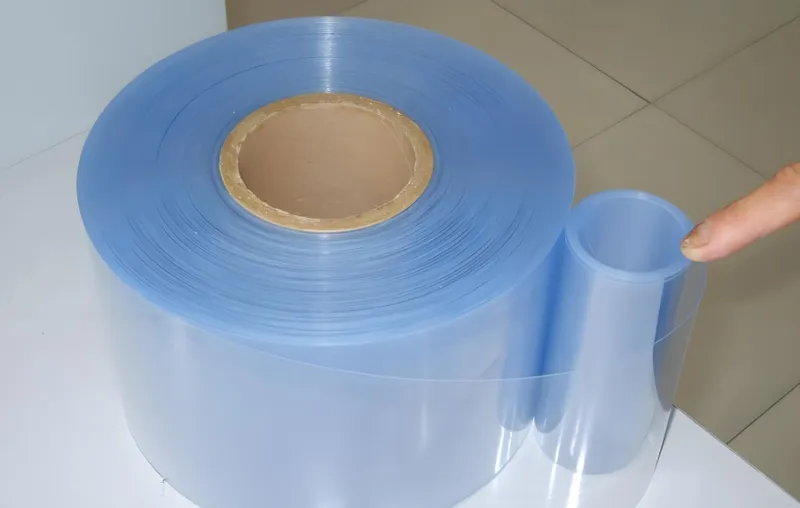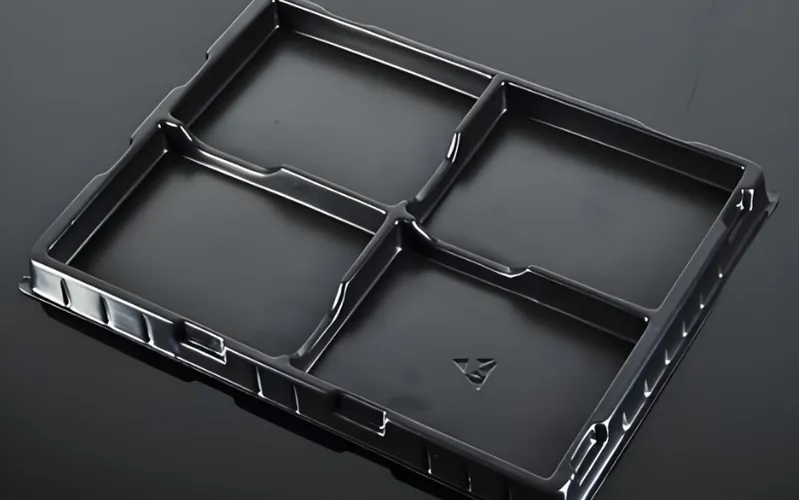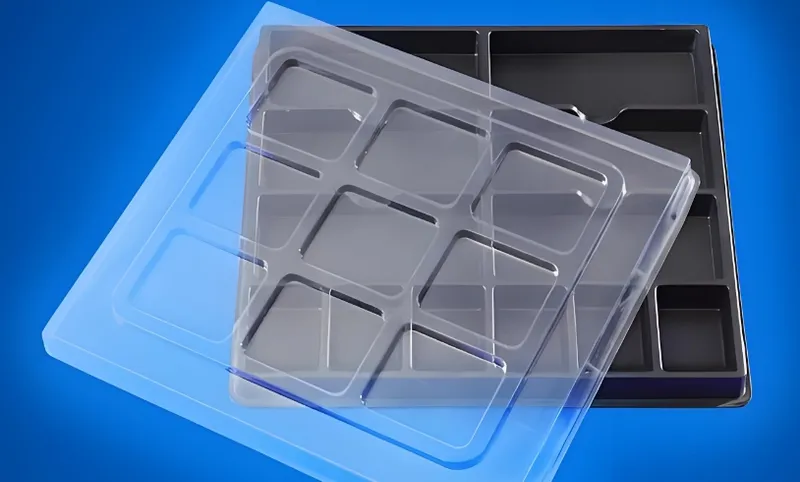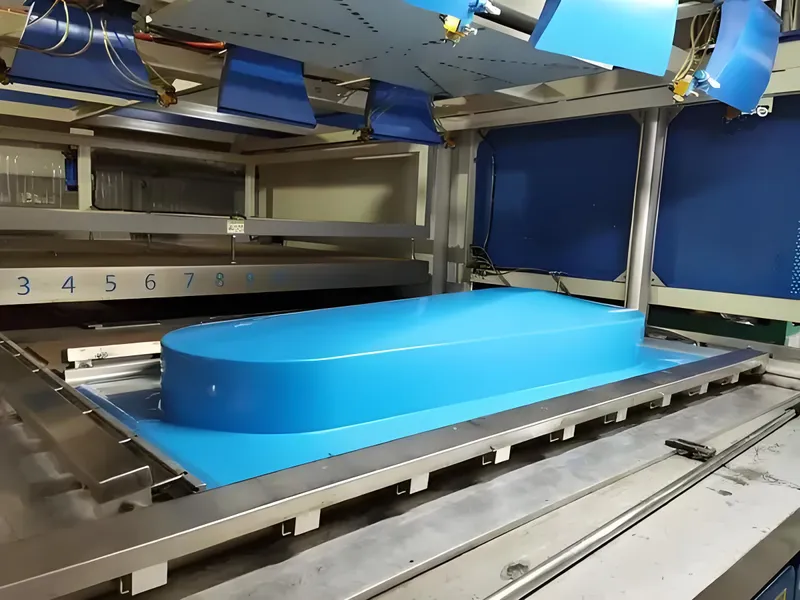Thermoformed packaging is a versatile and cost-effective manufacturing method used to create a wide range of plastic packaging products, from food containers to medical trays. This process involves heating a plastic sheet and shaping it into a desired form using molds, vacuum, and pressure. Understanding the complete thermoformed packaging1 process is essential for industries looking to optimize their packaging solutions. In this blog post, we will explore every stage of the process, from material selection to final product inspection, while also discussing key considerations, applications, and comparisons with other packaging technologies.
Thermoformed packaging involves heating plastic sheets and shaping them using molds, vacuum, and pressure, commonly used for food, pharmaceutical, and consumer goods packaging.
Delve deeper to discover how different materials, design choices, and process parameters impact the final product and its applications.
Thermoforming is suitable for high-volume production.Falso
While thermoforming can be used for production, it is generally more cost-effective for low to medium volumes due to higher per-part costs compared to injection molding.
Thermoforming reduces material waste compared to other plastic forming methods.Vero
The process allows for precise control over material thickness and can recycle trimmed excess plastic, minimizing waste.
- 1. What is Thermoformed Packaging?
- 2. What are the Steps in the Thermoformed Packaging Process?
- 3. What Materials are Commonly Used in Thermoformed Packaging?
- 4. What are the Key Design Considerations in Thermoformed Packaging?
- 5. What are the Applications of Thermoformed Packaging?
- 6. How Does Thermoformed Packaging Compare to Other Packaging Technologies?
- 7. Conclusione
What is Thermoformed Packaging?
Thermoformed packaging, commonly known as thermoforming2, is a manufacturing process where a plastic sheet is heated to a pliable temperature, formed into a specific shape using a mold, and then trimmed to create a usable product. The process is widely used due to its ability to produce lightweight, durable, and cost-effective packaging solutions for various industries.
Key Principles of Thermoforming
The core principle of thermoforming lies in the thermoplastic nature of the materials used. Plastics like polyethylene terephthalate (PET), polypropylene (PP), and polystyrene (PS) become malleable when heated and solidify upon cooling. This allows them to be shaped into complex forms while maintaining structural integrity.

Types of Thermoforming
There are two primary types of thermoforming:
-
Formatura sotto vuoto3: Uses vacuum pressure to pull the heated plastic sheet onto the mold.
-
Pressure Forming: Employs positive air pressure to push the sheet into the mold, enabling more intricate details and sharper features.
Both methods are integral to the packaging industry, with vacuum forming being more common for simpler shapes and pressure forming for more complex designs.
Vacuum forming is suitable for creating highly detailed packaging designs.Falso
Vacuum forming is typically used for simpler shapes, while pressure forming is preferred for detailed and complex designs.
Thermoforming is ideal for both small and large production runs.Vero
Thermoforming offers flexibility in production volume, making it cost-effective for prototyping and small runs, as well as scalable for larger quantities.
What are the Steps in the Thermoformed Packaging Process?
The thermoformed packaging process4 is a series of carefully controlled steps that transform a flat plastic sheet into a functional packaging product. Each stage is critical to ensuring the final product meets quality and performance standards.

The process includes material selection5, heating, forming, cooling, trimming, and inspection, with variations like vacuum and pressure forming.
1. Material Selection
Choosing the right plastic sheet is the first and most crucial step. The material must align with the product's requirements, such as clarity, strength, or barrier properties. Common materials include:

-
PET: Used for food packaging due to its clarity and barrier properties.
-
PP: Preferred for medical and food packaging for its chemical resistance.
-
PS: Inexpensive and easy to form, ideal for disposable items.
-
ABS: Strong and impact-resistant, used for durable packaging.
2. Heating
The selected plastic sheet is heated to its forming temperature, typically between 120°C and 170°C, depending on the material. The heating process must be uniform to ensure consistent forming.
3. Forming
Once heated, the plastic sheet is stretched over or into a mold. In vacuum forming, a vacuum pulls the sheet onto the mold, while in pressure forming, air pressure pushes it into the mold for greater detail.

4. Cooling
The formed plastic is cooled to solidify its shape. Cooling time varies based on material thickness and mold design but is critical to prevent warping or deformation.
5. Trimming
Excess material, known as "flash," is trimmed away using cutting dies or robotic trimmers. This step ensures the product meets precise dimensional specifications.
6. Inspection and Finishing
The final product undergoes quality inspection6 for defects, dimensional accuracy, and surface finish. Additional finishing processes, such as printing or labeling, may also be applied.
| Step | Key Considerations | Notes |
|---|---|---|
| Material Selection | Match material properties7 to application | e.g., PET for food safety |
| Heating | Uniform temperature for consistent forming | Typically 120-170°C |
| Forming | Vacuum or pressure based on complexity | Pressure for detailed parts |
| Cooling | Prevent warping with adequate cooling | Varies by material |
| Trimming | Precision cutting for clean edges | Robotic trimming for accuracy |
| Inspection | Ensure quality and dimensional accuracy | Includes visual and dimensional checks |
The forming step in thermoforming always uses vacuum pressure.Falso
While vacuum forming is common, pressure forming uses positive air pressure for more complex shapes.
Proper cooling is essential to prevent deformation in thermoformed parts.Vero
Inadequate cooling can lead to warping or shrinkage, affecting the product's functionality.
What Materials are Commonly Used in Thermoformed Packaging?
Material selection is pivotal in thermoformed packaging8, as it directly impacts the product's performance, cost, and suitability for specific applications.
Common materials include PET for clarity, PP for chemical resistance, PS for cost-effectiveness, and ABS for durability, each chosen based on application needs.

Polyethylene Terephthalate (PET)
PET is widely used in food packaging due to its excellent clarity, strength, and barrier properties. It is also recyclable, making it an environmentally friendly choice.
Polypropylene (PP)
PP offers superior chemical resistance and can withstand higher temperatures, making it ideal for medical trays and food containers that require sterilization.

Polystyrene (PS)
PS is inexpensive and easy to form, commonly used for disposable packaging like cups and trays. However, it is less durable than other options.
Acrylonitrile Butadiene Styrene (ABS)
ABS is known for its strength and impact resistance, making it suitable for durable packaging in industries like automotive and electronics.
| Material | Properties | Applications |
|---|---|---|
| PET | Clarity, strength, barrier | Food packaging, blister packs |
| PP | Chemical resistance, high-temp | Medical trays, food containers |
| PS | Cost-effective, easy to form | Disposable cups, trays |
| ABS | Strength, impact resistance | Durable packaging, automotive |
PET is the most commonly used material in thermoformed packaging.Vero
PET's combination of clarity, strength, and recyclability makes it a top choice for many packaging applications.
All thermoforming materials are suitable for high-temperature applications.Falso
Materials like PP can withstand higher temperatures, while others like PS may deform under heat.
What are the Key Design Considerations in Thermoformed Packaging?
Designing for thermoformed packaging requires careful attention to detail to ensure the final product is functional, aesthetically pleasing, and manufacturable.
Key design considerations9 include draft angles, radii, wall thickness, and draw ratios to ensure successful forming and product performance.

Draft Angles
Draft angles are essential for easy removal of the part from the mold. A minimum draft angle10 of 1-3 degrees is recommended to prevent sticking and damage.
Radii and Fillets
Sharp corners should be avoided to reduce stress concentrations. A minimum radius of 1/32 inch is typically advised for fillets.
Wall Thickness
Uniform wall thickness11 is crucial to avoid weak spots and ensure even cooling. Variations in thickness can lead to warping or incomplete forming.

Draw Ratio
The draw ratio, or the ratio of the depth to the width of the formed part, affects material thinning. A draw ratio of 1:1 is common, but higher ratios may require special considerations.
| Design Element | Recommended Value | Notes |
|---|---|---|
| Draft Angle | 1-3 degrees | Facilitates mold release |
| Radii | Minimum 1/32 inch | Reduces stress concentrations |
| Wall Thickness | Uniform across part | Prevents warping |
| Draw Ratio12 | 1:1 (depth:width) | Higher ratios may thin material |
Sharp corners are acceptable in thermoformed designs.Falso
Sharp corners can cause stress concentrations and lead to part failure; radii are recommended.
Uniform wall thickness is critical for thermoformed parts.Vero
Uneven thickness can result in weak areas and inconsistent cooling, compromising the product's integrity.
What are the Applications of Thermoformed Packaging?
Thermoformed packaging is utilized across various industries due to its versatility, cost-effectiveness, and ability to produce both disposable and durable products.
Typical applications include food packaging, medical trays, electronics protection, and consumer goods packaging.

Food Packaging
Thermoformed trays, clamshells, and containers are widely used for fresh produce, baked goods, and ready-to-eat meals, offering protection and visibility.
Medical Packaging
Sterile trays and blister packs for pharmaceuticals and medical devices ensure product safety and compliance with regulatory standards.

Electronics Packaging
Protective packaging for electronics, such as trays and clamshells, safeguards delicate components during shipping and handling.
Consumer Goods
Blister packs and display packaging for toys, cosmetics, and hardware provide attractive presentation and protection.
Thermoformed packaging is only used for disposable products.Falso
While commonly used for disposable items, thermoforming is also employed for durable packaging in industries like medical and electronics.
Thermoforming is suitable for packaging products with complex shapes.Vero
Pressure forming, in particular, allows for intricate details and sharp features in packaging designs.
How Does Thermoformed Packaging Compare to Other Packaging Technologies?
Understanding the advantages and limitations of thermoformed packaging compared to other methods, such as injection molding, is crucial for making informed decisions.
Thermoforming offers lower tooling costs and faster prototyping compared to injection molding, making it ideal for small to medium production runs.

Advantages of Thermoforming
-
Lower Tooling Costs13: Molds are less expensive than those for injection molding, making thermoforming cost-effective for smaller production volumes.
-
Faster Prototyping14: Shorter lead times for mold creation allow for quicker iterations and product launches.
-
Large Part Capability: Thermoforming can produce larger parts than many other plastic forming methods.
-
Material Versatility: A wide range of plastics can be used, offering various properties and finishes.
Disadvantages of Thermoforming
- Higher Per-Part Cost for Large Runs: For high-volume production, injection molding may be more economical.

-
Limited to Simpler Geometries: While pressure forming allows for more detail, thermoforming is generally less suitable for highly complex shapes.
-
Potential for Uneven Thickness: Material thinning can occur in deep draws, affecting part strength.
| Aspect | Thermoforming | Injection Molding |
|---|---|---|
| Tooling Cost | Lower | Higher |
| Production Volume | Best for small to medium runs | Best for large runs |
| Part Complexity | Simpler shapes | Highly complex shapes |
| Material Waste | Minimal, recyclable trim | Higher due to sprues and runners |
| Lead Time | Shorter for prototypes | Longer for mold creation |
Thermoforming is more cost-effective than injection molding for all production volumes.Falso
While thermoforming has lower tooling costs, injection molding becomes more economical for large production runs due to lower per-part costs.
Thermoforming allows for faster prototyping compared to injection molding.Vero
The simpler mold-making process in thermoforming enables quicker turnaround for prototypes and small batches.
Conclusione
Thermoformed packaging is a highly adaptable and efficient manufacturing process that serves a wide range of industries, from food and medical to electronics and consumer goods. By understanding the complete process—from material selection and heating to forming, cooling, and trimming—businesses can make informed decisions about when and how to use thermoforming for their packaging needs. With its lower tooling costs, faster prototyping capabilities, and suitability for small to medium production runs, thermoforming remains a popular choice for creating lightweight, durable, and cost-effective packaging solutions.
As industries continue to prioritize sustainability, the use of recyclable materials like PET in thermoforming is expected to grow. Additionally, advancements in mold technology and process automation will further enhance the precision and efficiency of thermoformed packaging.
-
Explore this link to understand the versatility and applications of thermoformed packaging in various industries. ↩
-
Learn about the thermoforming process and its benefits for creating efficient packaging solutions. ↩
-
Discover the advantages of Vacuum Forming and how it can enhance your packaging designs. ↩
-
Understanding the thermoformed packaging process can enhance your knowledge of packaging technology and its applications. ↩
-
Exploring material selection will help you make informed decisions for effective packaging solutions. ↩
-
Learning about quality inspection practices can help ensure that your products meet industry standards and customer expectations. ↩
-
Understanding material properties is essential for selecting the right plastic sheet for your application, ensuring optimal performance and safety. ↩
-
Explore this link to understand the advantages and applications of thermoformed packaging in various industries. ↩
-
Discover essential design factors that ensure the functionality and manufacturability of thermoformed packaging products. ↩
-
Understanding draft angles is crucial for effective mold design, ensuring easy part removal and preventing damage during production. ↩
-
Understanding uniform wall thickness is essential for preventing weak spots and ensuring even cooling in thermoformed products. ↩
-
Exploring draw ratio helps in understanding its impact on material properties and the design of thermoformed parts. ↩
-
Learn how lower tooling costs in thermoforming can benefit small to medium production runs, making it a cost-effective choice. ↩
-
Discover how faster prototyping in thermoforming can lead to quicker product launches and innovation in packaging solutions. ↩









